No one will dispute the fact that no building will last long without a reliable and solid foundation, protected from moisture penetration. Such protection is provided by the arrangement of a proper, well-thought-out drainage of the foundation as early as the design of the construction site. Let's try to understand what the drainage of the foundation is and how to create it with your own hands.
Content
The well-known expression "water stone grinds" is very appropriate when building private houses: no matter how strong and strong the foundation is, but under the constant influence of moisture, it will gradually begin to deteriorate. In the case of a high groundwater level, the insulation will not survive over time, and the water will begin to fill the basements. The most rational way to protect the cellars and the basement from the penetration of water and the adverse consequences of flooding is considered competent development and proper implementation of an underground drainage canal system.
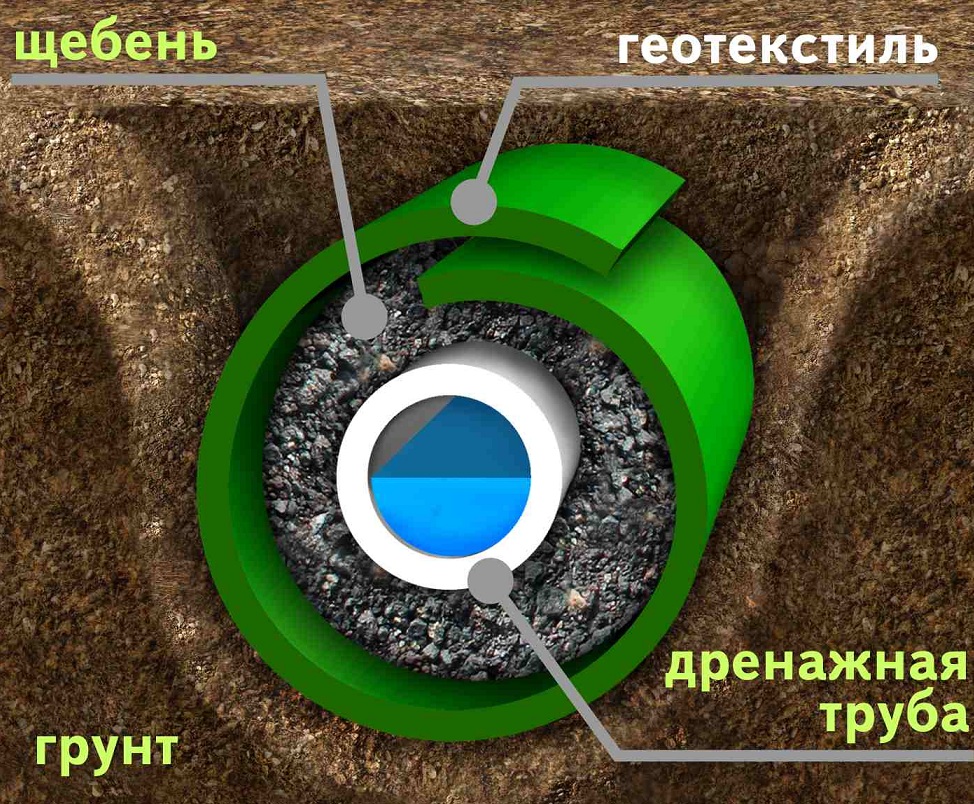
The cost of the whole package of events in specialized companies is quite high, but we suggest you to take advantage of our advice and the universal technology of self-assembly of drainage installation, thanks to which the owner can extend the life of the house by 20, 30 or even more years.
In which cases can not do without the creation of drainage?
Specialists distinguish several points that oblige to lay drainage system on the site:
- if the project involves the construction of a basement or a basement floor;
- a high ground level is observed;
- the basement will contain equipment that requires reliable protection against moisture.
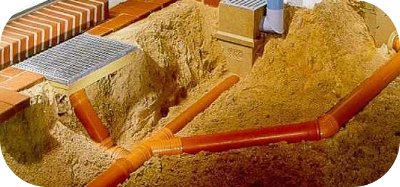
Foundation drainage system
Classic drainage Is a complex closed-type pipeline system laid at a small angle for the flow of water.
At each drainage angle there is a reservoir for assessing the condition and efficiency of the drainage operation to detect and timely eliminate possible blockages and other malfunctions.
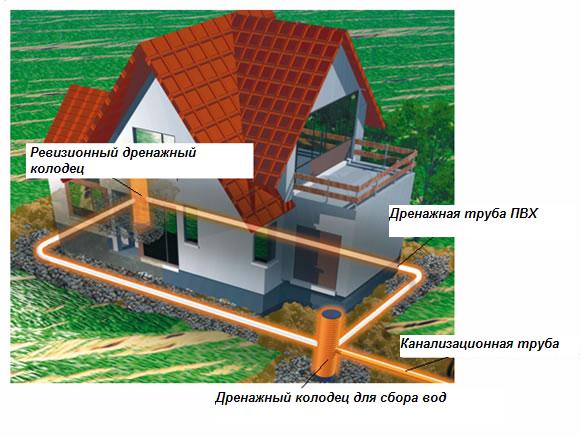
The principle of drainage operation is as follows: excess water drains into the pipeline and accumulates in the corner tanks, from which it is successfully withdrawn beyond the boundaries of possession. The developed project also establishes a method for removing water from the house. At the same time, it should be noted that even a high-quality drainage constructed according to all the rules does not guarantee 100% protection against high humidity in the cellars of the house. To completely exclude the penetration of moisture to an object located below the soil level, you should think about waterproofing the foundation.
Types of drainage
Modern drainage depending on the location of the foundation of the object under construction can be of several types:
Ring drainage, used to protect against flooding of basements of free-standing buildings, which are erected on a sand foundation. Since moisture easily penetrates into such soil, then to protect the foundation of the house is capable of annular drainage, visually resembling a special ring with an insulated from the water inside. Arrangement of such drainage is made slightly below the floor level of the socle and at a distance of 5-7 meters from their wall surface.
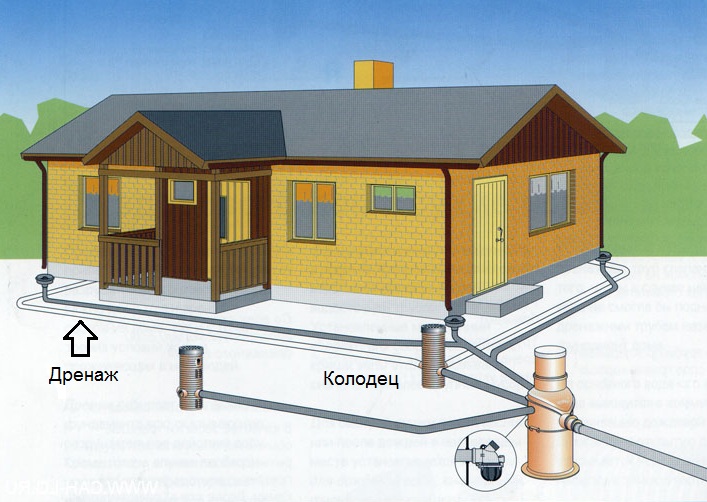
Wall-mounted drainage in contrast to the ring, is laid near the basement and is designed for effective protection against flooding of basements and basement floors of houses built on clay soil. Most often, the wall drainage is laid at the level of the basement of the foundation outside of the structure.
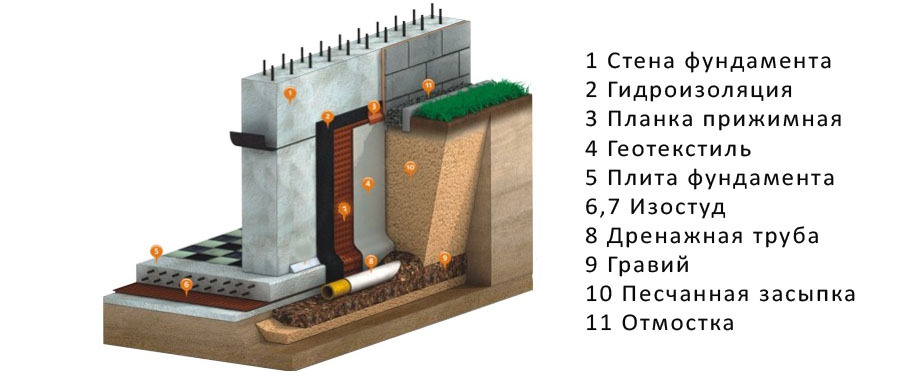
How to install foundation drainage yourself
Designing of drainage
Any construction activities are preceded by the stage of project development, which becomes the basis for further definition of the volume and complexity of upcoming events, calculation of the number of materials and components consumed, and the amount of expenses. Since the cost of drawing up such a project in a private company can be very high, you can try to calculate yourself.
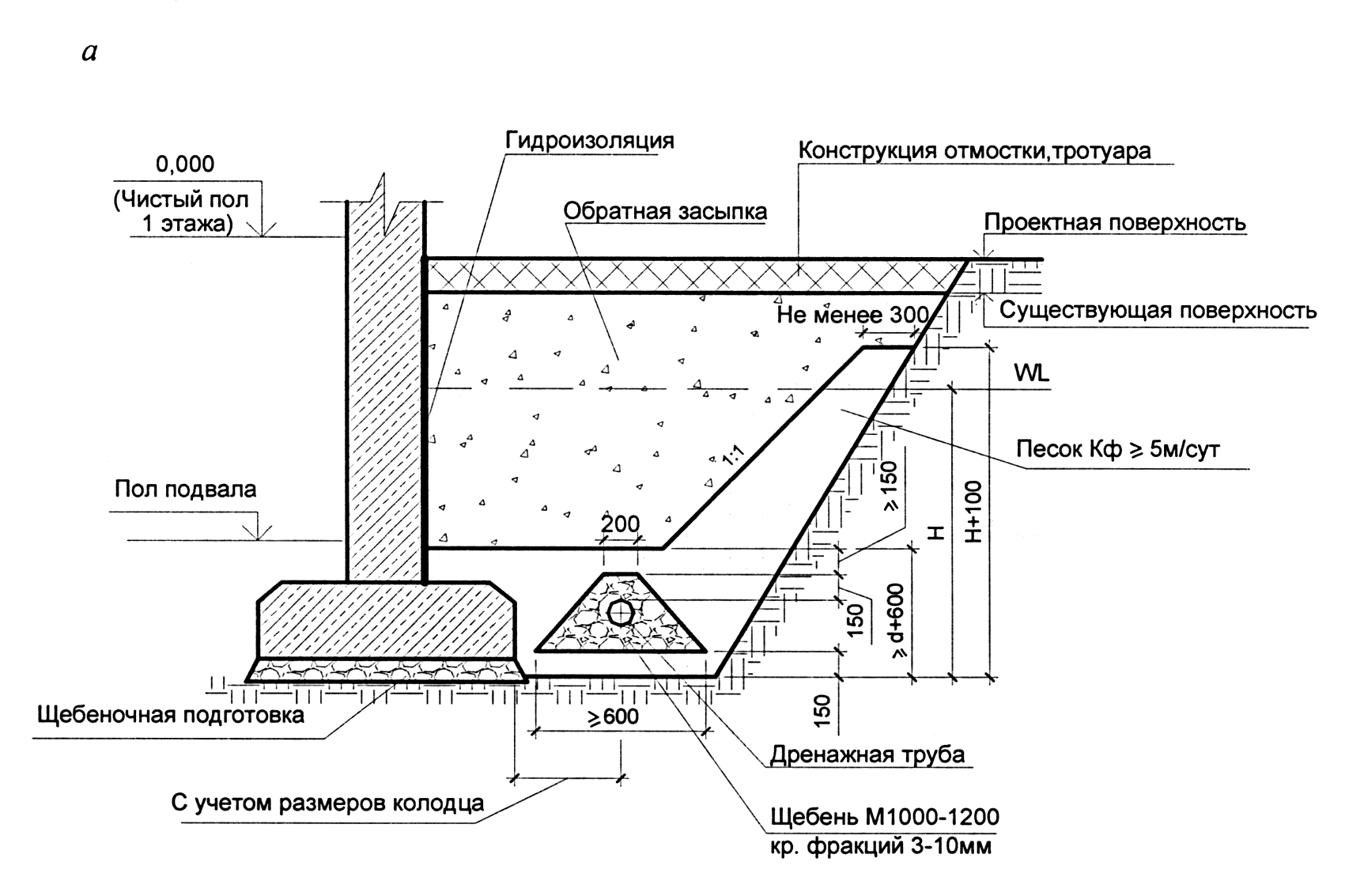
Site analysis
After this, using specialized equipment, you should learn and analyze the occurrence and condition of groundwater in your garden. To determine the water level, it is necessary to dig a pit 2.5 meters deep. Having carefully studied the layers of the soil, its structure and character, it is necessary to begin work on the preparation of the foundation.
Preparation of the building foundation
To prepare everything for the arrangement of drainage, you have to perform a number of important actions:
- dig out the existing foundation and remove the remaining waterproofing layer from it, if any, of course;
- using a heat gun, thoroughly dry the foundation;
- apply a new layer of waterproofing material, using penetrating, polyethylene, coating insulation.
To drain the foundation, you will have to stock up:
- special drainage pipes (drains). The choice of one type or another is determined by the rigidity of the groundwater flow and personal preferences.
- brick fight or rubble, which, although worth a little more expensive, but much longer serves;
- river sand;
- a capacious drum of plastic to create an absorption well;
- wells turning;
- geotextile fiber;
- copper clamps for PVC pipes.
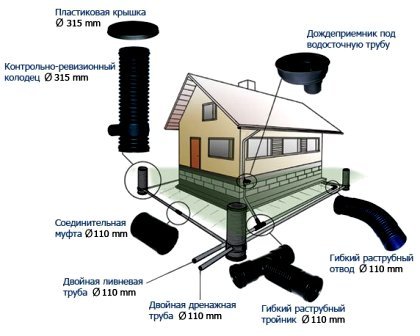
We begin to install the drainage of the foundation
1. On the perimeter of the building a ditch with an insignificant inclination of 5-8 ° is built. The width of the ditch is determined by the width of the pipes that will be laid. Usually it exceeds the width of the pipes by 30 cm so that it becomes possible to fill the depressions with rubble;
2. For the installation of observation pits, the ditch expands at the corners;
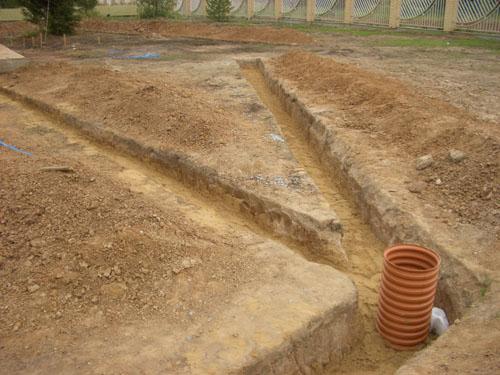
3. The bottom of the prepared ditch is filled with sand and rammed at the drain drainage angle;
4. Overlay the geotextile fiber layer so that its edges can be fixed beyond the edges of the eroded ditch;
5. A layer of crushed stone is filled in at 10 cm;
6. Pipes are laid, all turns are equipped with bends in which inspection wells will be mounted. They set the direction of the water flow and play an important role in cleaning the drainage from pollution. Sightwells are made of PVC pipes or special sewer connections. Pipes are firmly clamped;
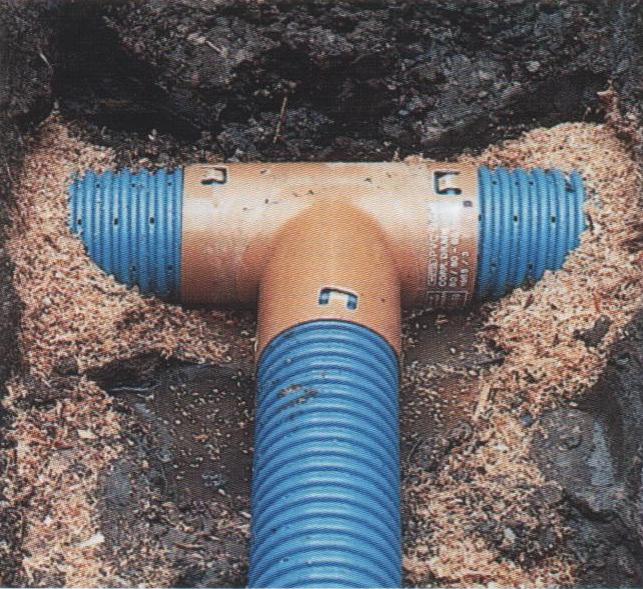
7. At the end of the drainage, a large absorbing well of a depth of 0.7 m is constructed. The pit is covered with geotextile, then a barrel of polyethylene is installed, which must have drilled holes and outwardly resemble a colander. The bottom of the well is covered with rubble;
8. The pipeline is connected to the wells of a turning type and securely attached to the final barrel. A pipe is inserted into the special hole on the side;
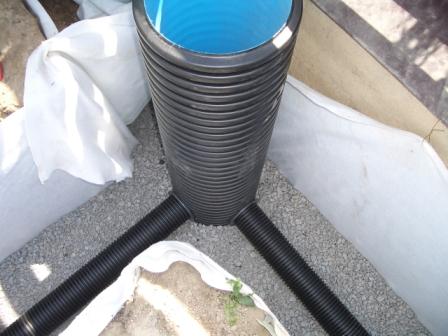
9. All pipes should be placed at a slight slope;
10. Padded drainage is covered with rubble;
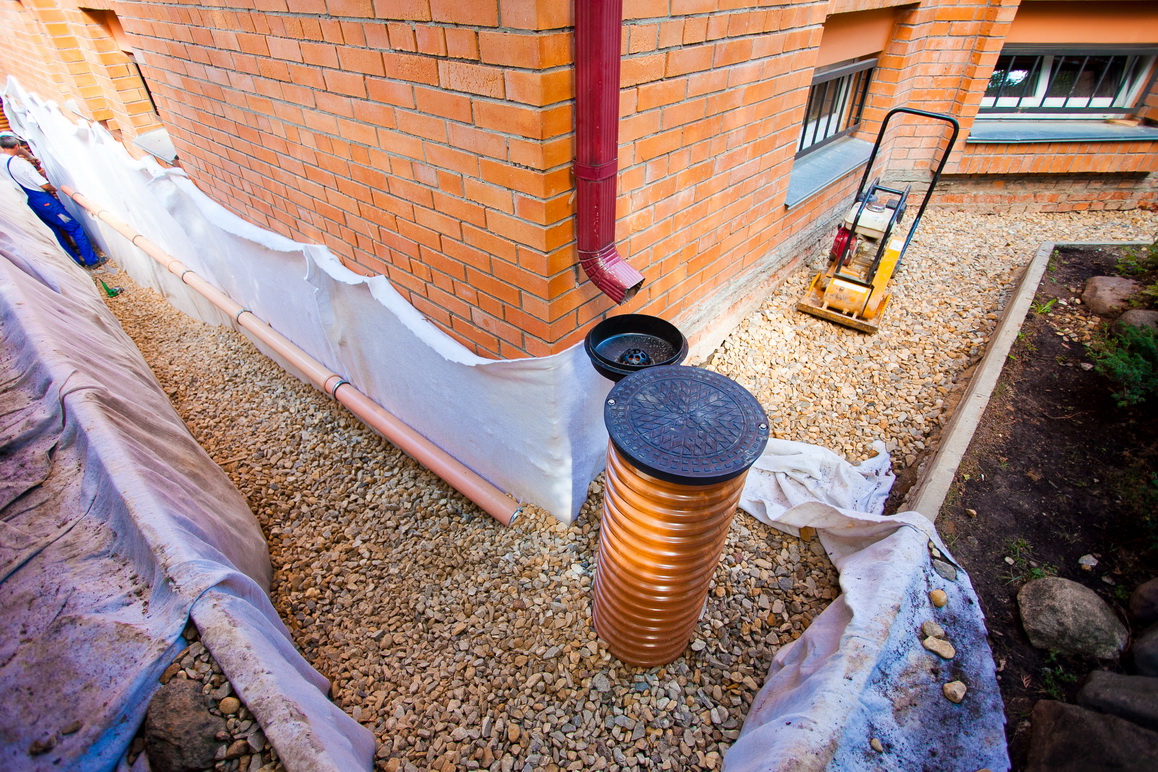
11. The system is covered with geotextile fibers overlapping, branches are laid on top, which give the structure additional rigidity;
12. It is filled with sand and soil and carefully compacted;
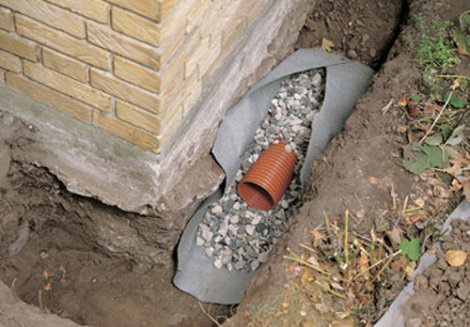
13. A drain pump is installed in the barrel cavity, which will allow you to pump out the accumulated liquid.
About some subtleties of drainage works you can learn from the video on youtube.



















